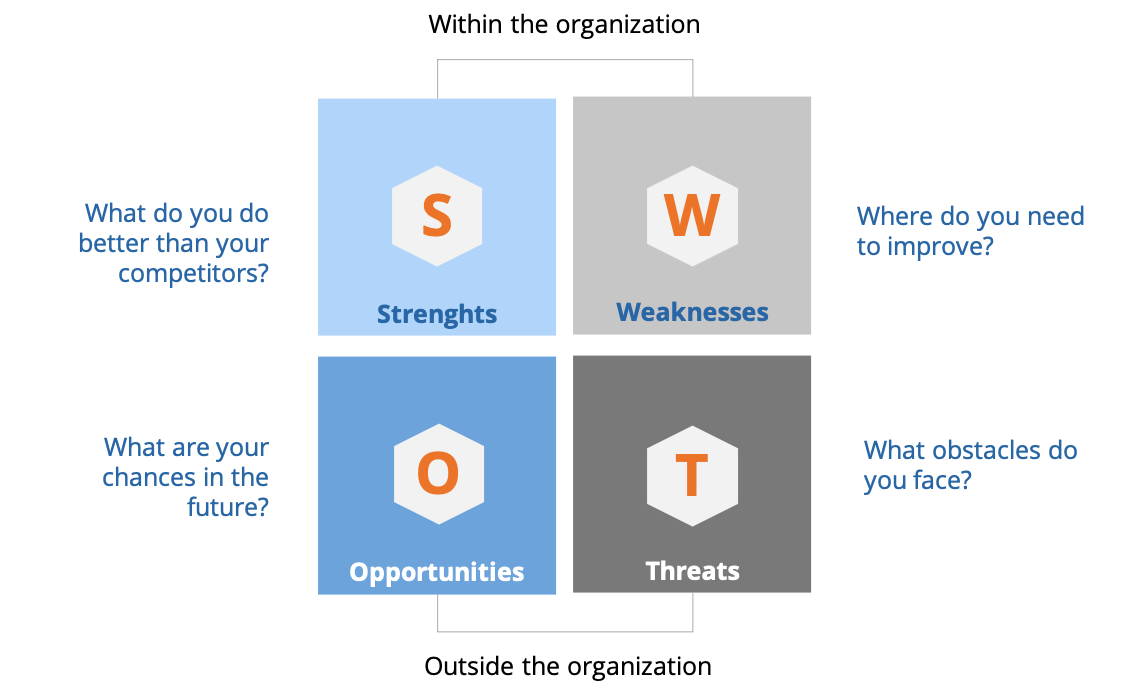
SWOT analysis as a digital template from ConWISE
Approach
- First, you define the topic or subject you want to analyze. This can be an organizational unit, but also a product, service or process.
- It is recommended to start with strengths and weaknesses. Always evaluate them in relation to the object under consideration (internal factors).
- After that, capture the opportunities and threats that are influenced by outside factors.
- Finally, sort the points in the order of their importance and influence (descending from top to bottom).
Description
With the help of the SWOT analysis, you have the opportunity to find out the strengths and weaknesses of your company, your department or your products. Furthermore, the method compares the opportunities and risks in relation to the environment and the competition. The SWOT analysis is one of the best-known and most frequently used methods in management. The abbreviation SWOT stands for
Strengths, Weaknesses, Opportunities, and Threats.
Thematic classification
Internal and external factors are analyzed using the SWOT method. In this respect, it is part of strategic management.
Who benefits from this method?
- Management
- Organizations
- Companies
- Departments
- Projects
- Product manager
Practical tips
- It can be helpful to first get an overview of the external factors.
- The ConWISE platform also offers the PESTEL method for an environmental analysis. This includes political, economic, social, technological, ecological and legal factors.
Limits of Application
The SWOT analysis is intended as a starting point for discussions. On its own, it gives no direct indication of improvement. Only the consideration of combinations of the individual results brings further insights.

